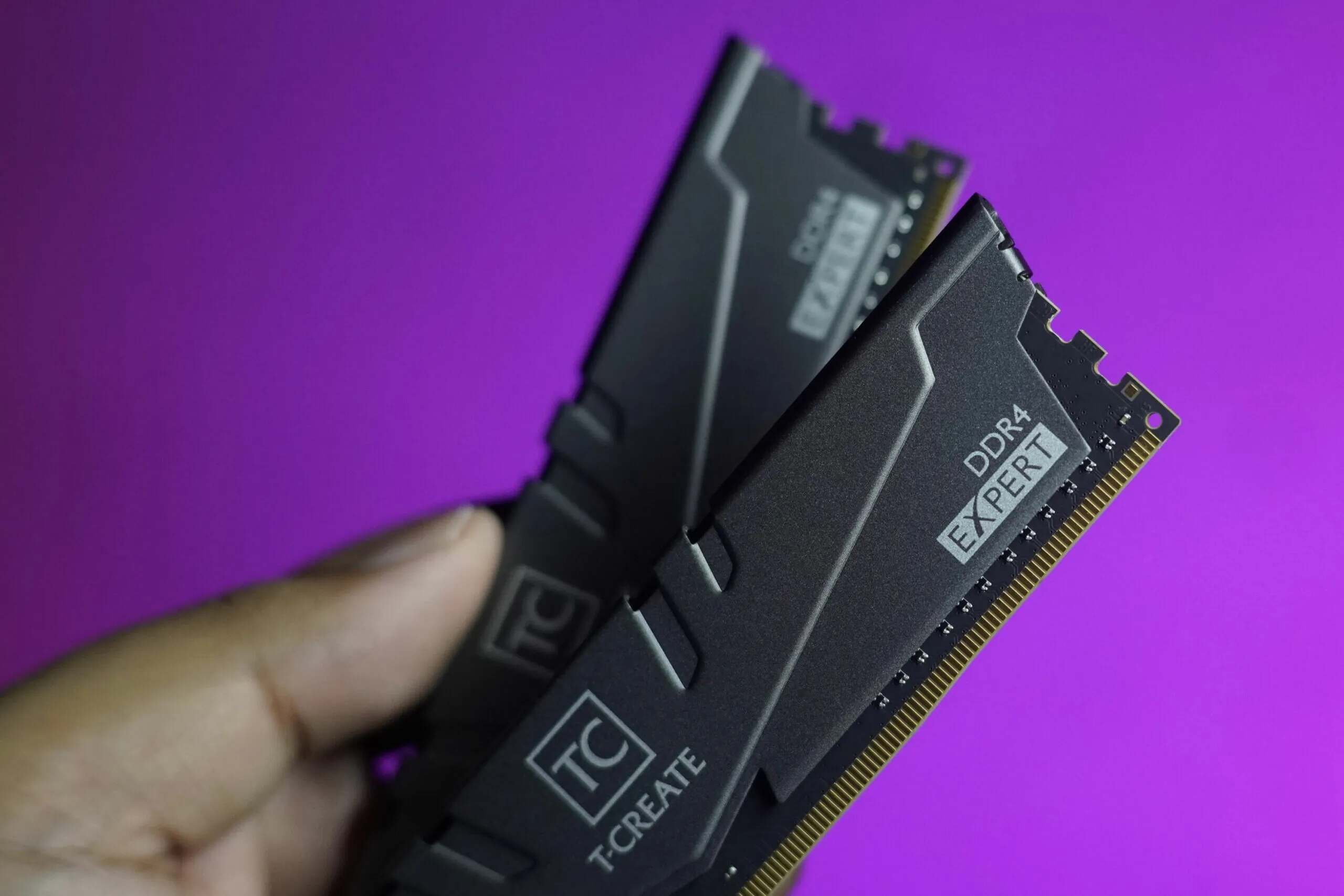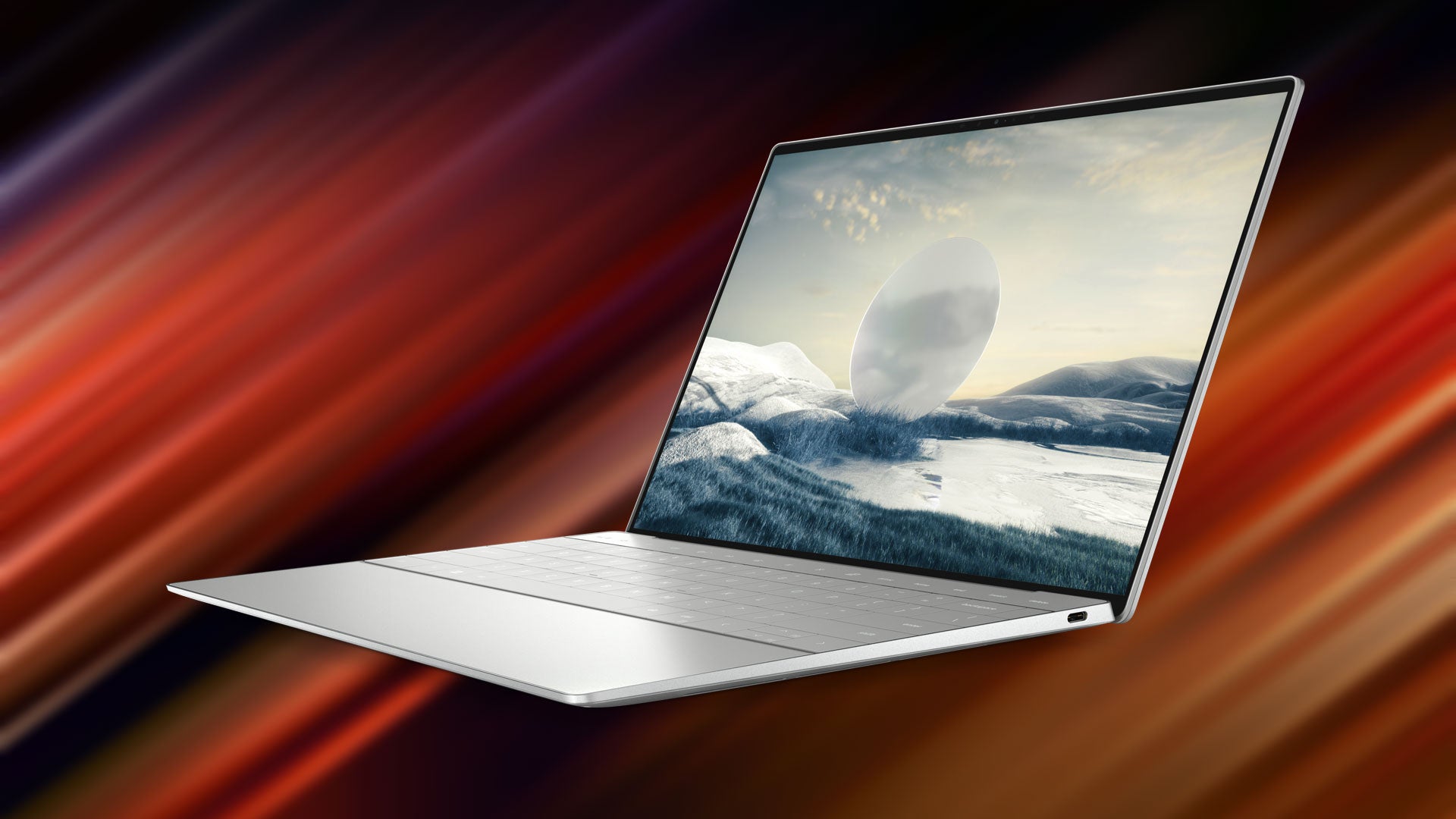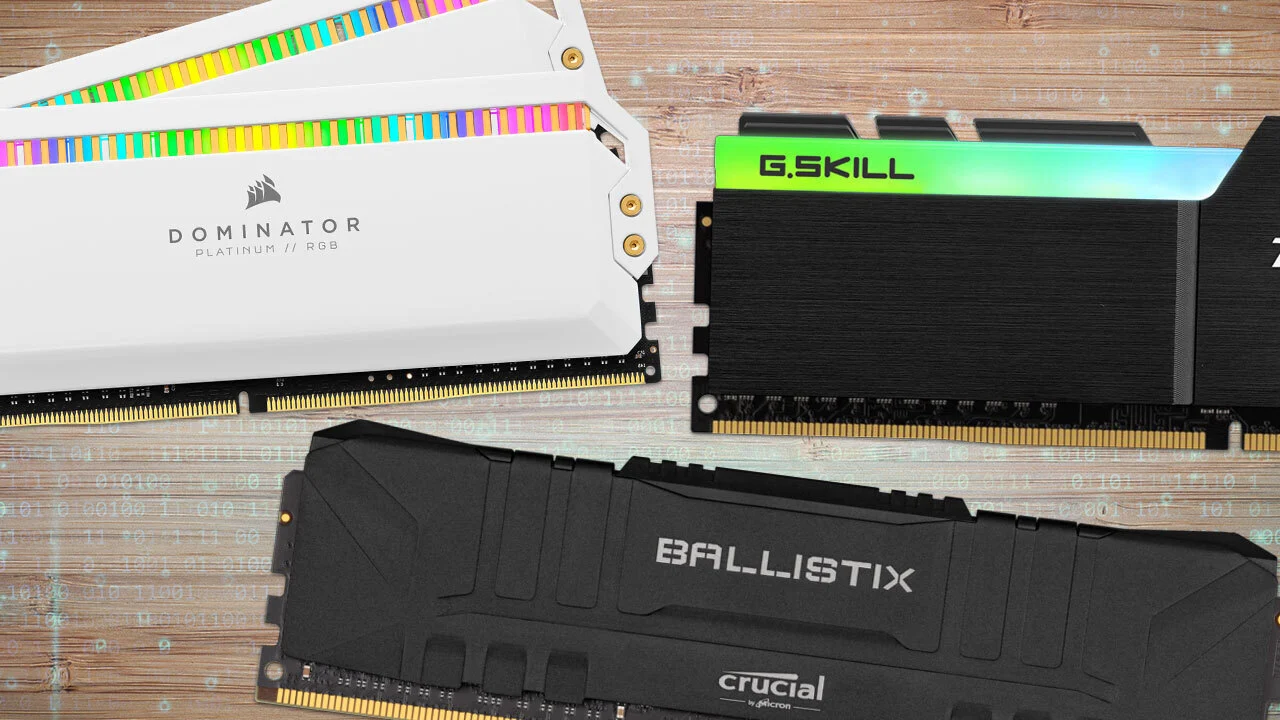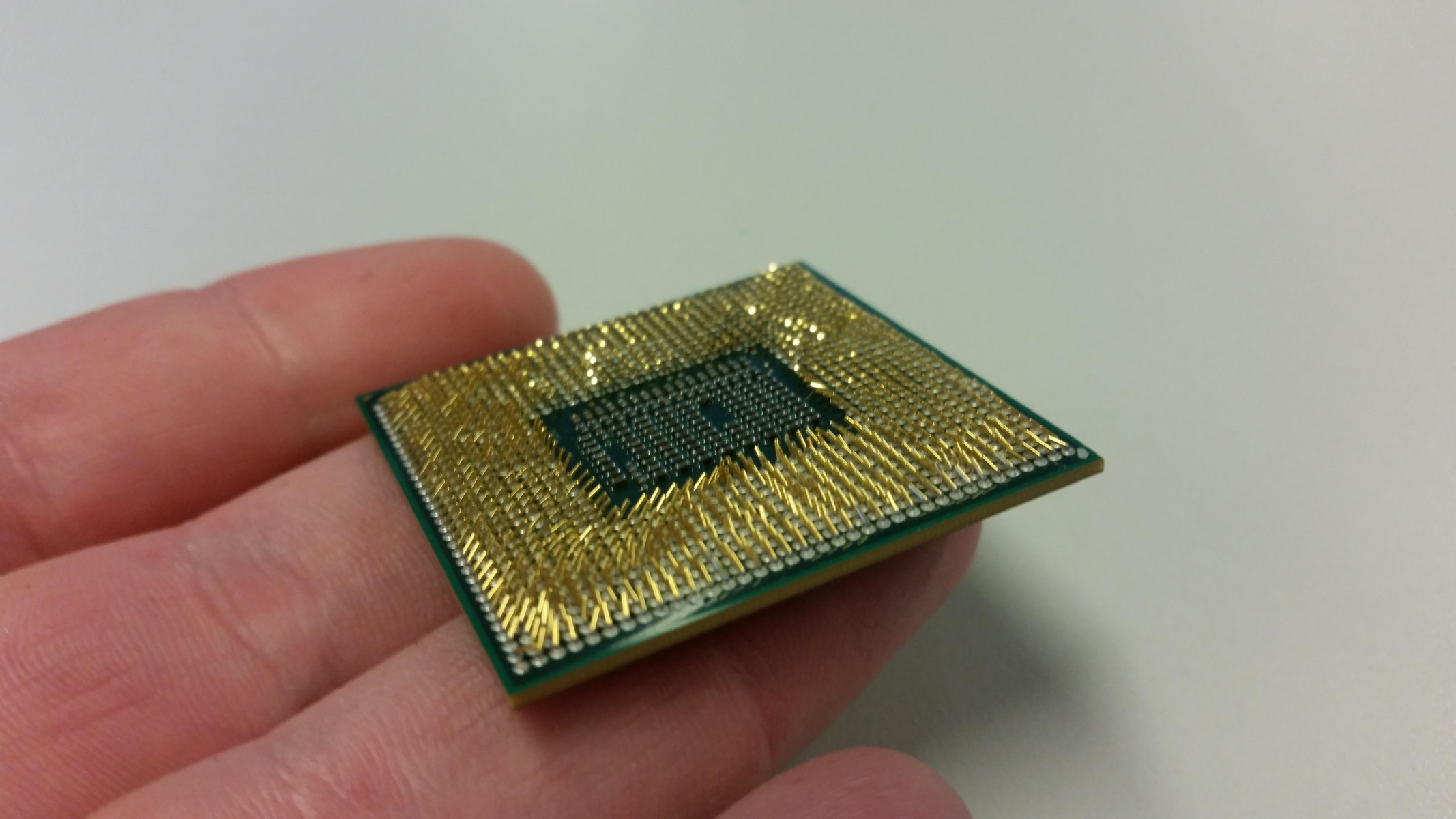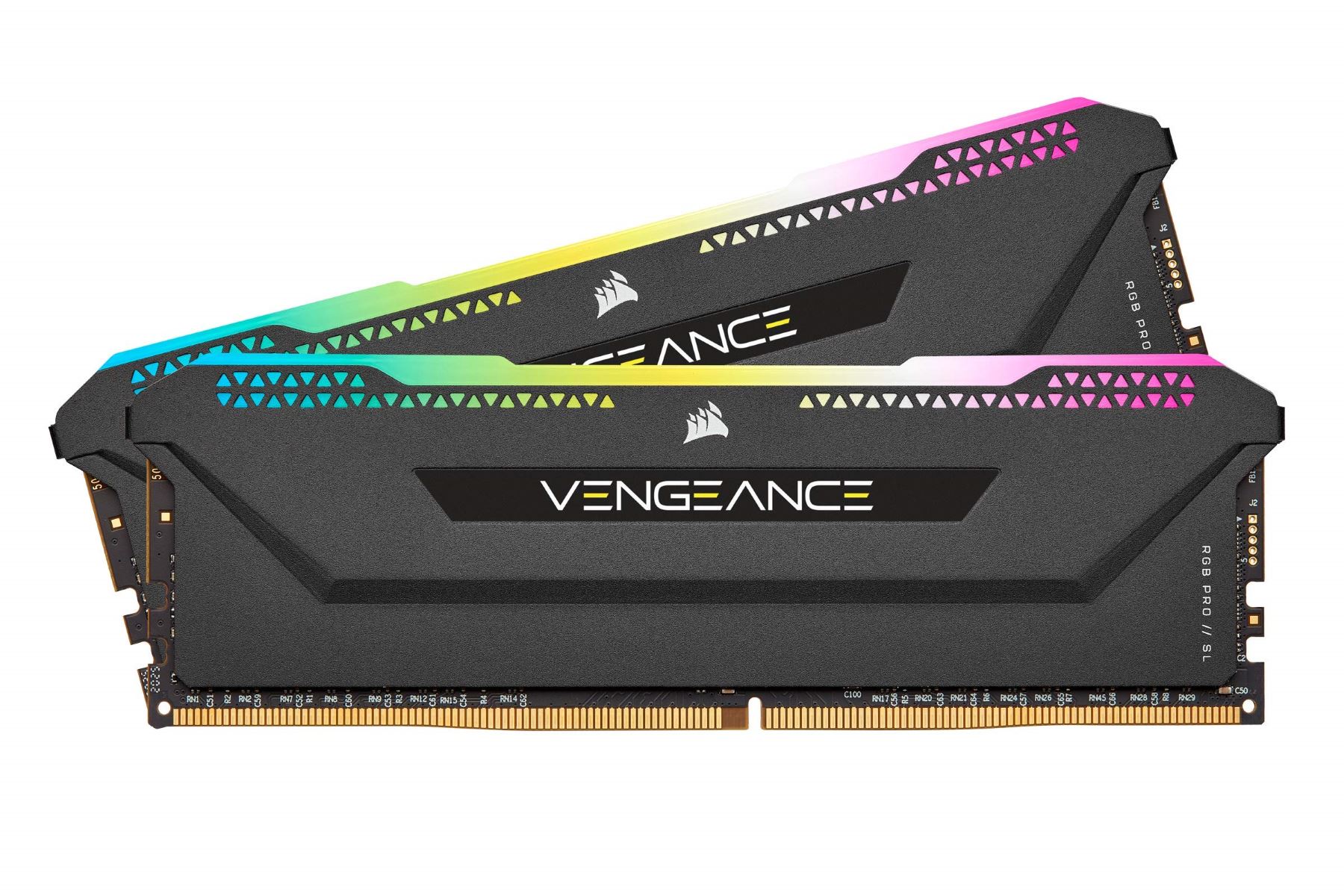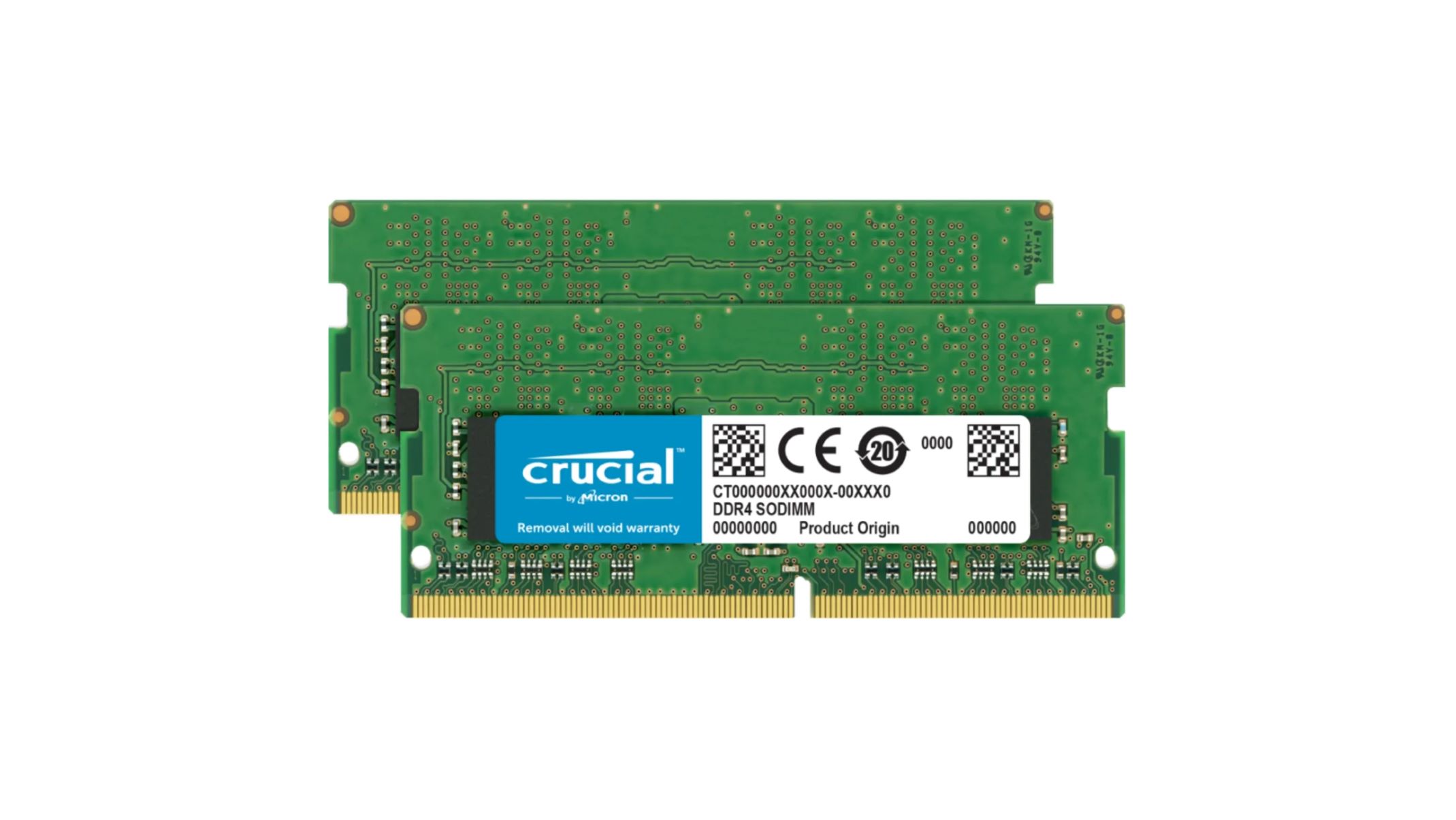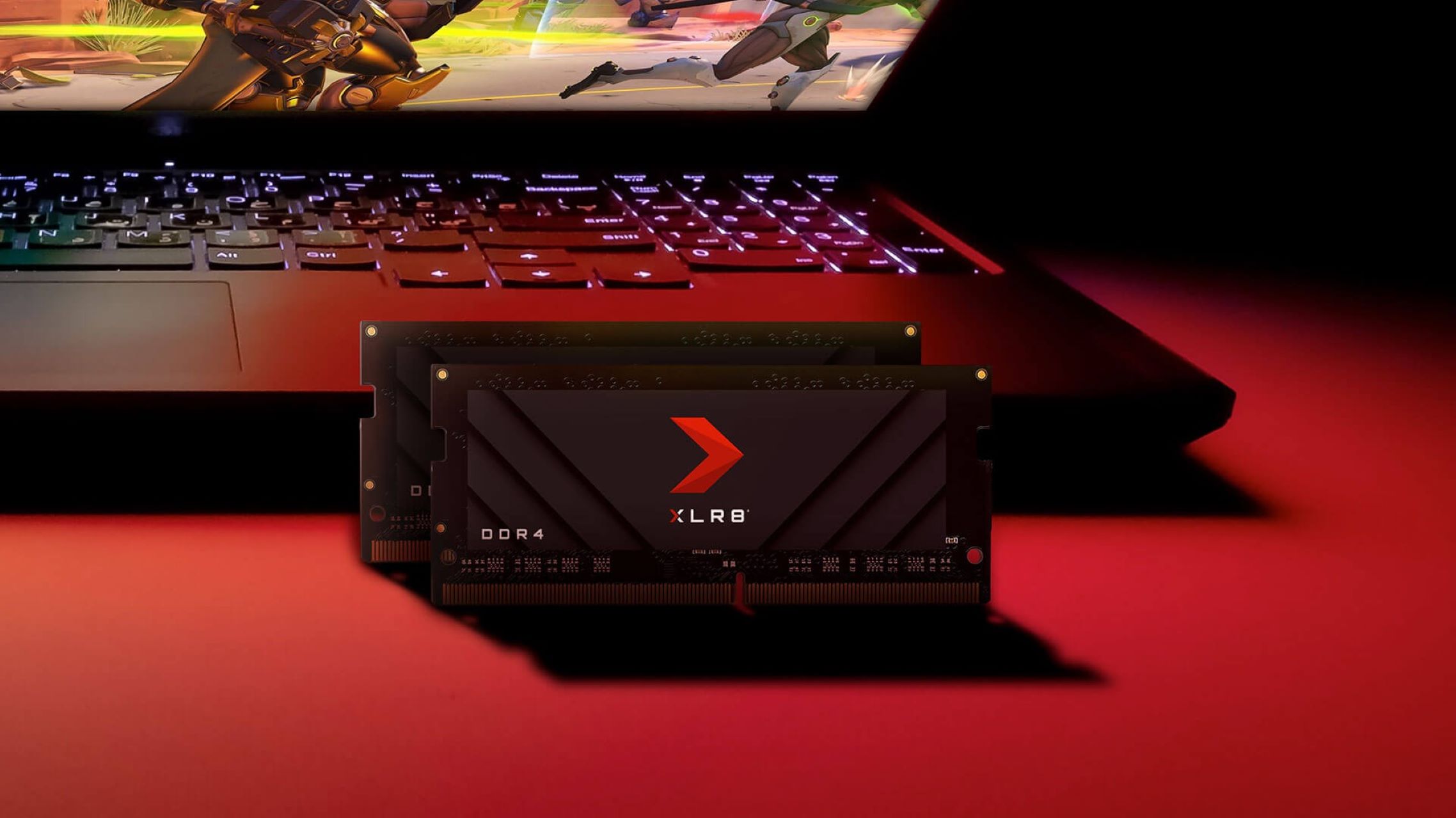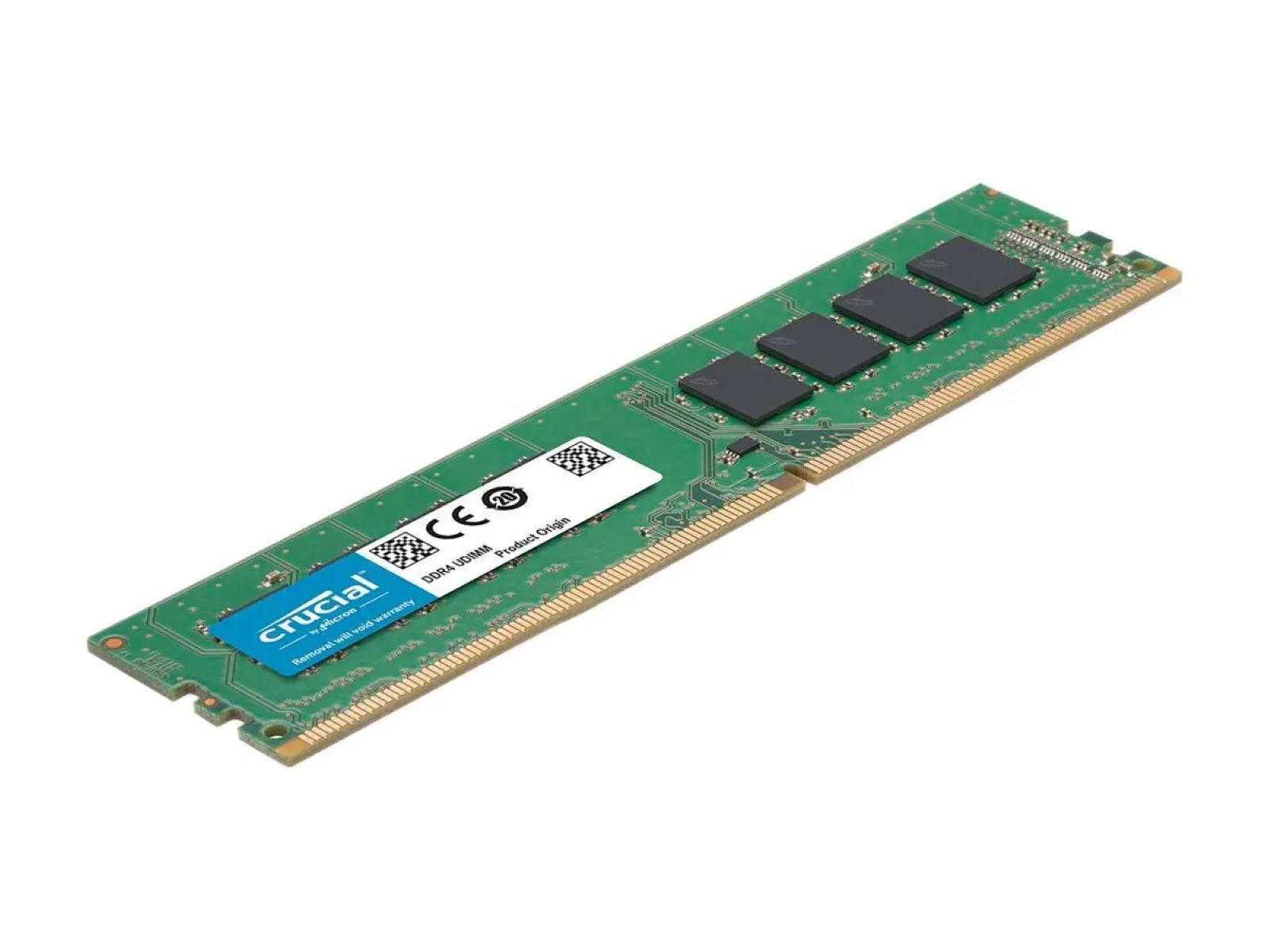Introduction
Welcome to the world of computer hardware, where acronyms and technical terms abound. One such term that you may have come across is DDR4 RAM. If you’ve been wondering what it is and how it differs from other types of RAM, you’ve come to the right place.
RAM, short for Random Access Memory, is a crucial component in any computer. It is responsible for temporarily storing data that the CPU needs to access quickly. Think of it as your computer’s short-term memory, delivering data to the processor at high speeds.
DDR4 RAM, or Double Data Rate 4 Random Access Memory, is the latest iteration in the DDR series and has replaced DDR3 RAM as the standard in modern computers. It offers several improvements over its predecessor, delivering better performance and efficiency.
In this article, we will delve into the world of DDR4 RAM, exploring its key features, benefits, and performance comparisons with DDR3 RAM. We will also discuss its compatibility with motherboards and CPUs, along with factors to consider before upgrading to DDR4 RAM. By the end, you will have a clear understanding of whether DDR4 RAM is worth the investment for your computer.
What is RAM?
Before diving into the specifics of DDR4 RAM, let’s start by understanding what RAM itself is. As mentioned earlier, RAM stands for Random Access Memory, and it plays a crucial role in your computer’s performance.
RAM serves as a temporary storage space for data that your device needs to access quickly. It acts as a bridge between the CPU and the storage devices, such as the hard drive or solid-state drive. When you launch an application or open a file, the necessary data is transferred from the storage devices to RAM for fast and easy access by the CPU.
Unlike permanent storage, like your hard drive or SSD, RAM is volatile memory, meaning it loses its stored data when power is turned off. This volatile nature allows for quick read and write operations, making it an essential component for multitasking and running applications smoothly.
The size of RAM available in a computer determines its multitasking capabilities. A larger RAM capacity allows your device to handle more programs simultaneously without performance bottlenecks. It ensures smooth operation by providing ample space for the CPU to store and retrieve data from various applications.
RAM also plays a crucial role in gaming. When playing graphic-intensive games, a significant amount of data needs to be loaded into RAM for quick access. This allows for smooth and lag-free gameplay by minimizing the need to fetch data directly from the storage devices.
Overall, RAM acts as a temporary workspace for your computer, balancing the demands of the CPU and the storage devices. The more RAM you have, the better your system’s performance will be, especially when it comes to multitasking and running resource-intensive applications.
What is DDR4 RAM?
DDR4 RAM, or Double Data Rate 4 Random Access Memory, is the latest generation of RAM technology that has been widely adopted in modern computer systems. It builds upon its predecessor, DDR3, with several key advancements and improvements.
One notable feature of DDR4 RAM is its increased operating speed. Compared to DDR3, DDR4 RAM operates at higher frequencies, enabling faster data transfer rates. This results in improved overall system performance, particularly in tasks that involve data-intensive applications, such as video editing, gaming, and 3D rendering.
Another significant enhancement in DDR4 RAM is its increased module density. DDR4 modules can have higher capacities, allowing for greater memory expansion potential. This is particularly beneficial for users who require more RAM for demanding tasks or want to future-proof their systems.
DDR4 RAM also offers improved power efficiency compared to its predecessor. It operates at a lower voltage, which contributes to reduced power consumption and heat generation. This improved energy efficiency not only benefits laptop and mobile devices but also helps reduce overall system cooling requirements.
In terms of design, DDR4 RAM modules incorporate a higher number of pins compared to DDR3. This change in pin configuration ensures compatibility with the latest motherboards and processors designed to support DDR4 technology. Therefore, it is essential to check if your system supports DDR4 RAM before considering an upgrade.
Furthermore, DDR4 RAM modules feature improved error checking and correction capabilities. This ECC (Error Correction Code) feature helps identify and correct memory errors, enhancing system stability and reducing the chances of data corruption.
Overall, DDR4 RAM represents a significant step forward in memory technology, offering increased speed, improved power efficiency, higher module densities, and enhanced data integrity. It is the go-to choice for users seeking better performance and future-proofing their systems.
Key Features of DDR4 RAM
DDR4 RAM comes packed with several key features that make it a significant improvement over its predecessor, DDR3. These features offer enhanced performance, increased efficiency, and greater flexibility for users. Let’s take a closer look at some of the key features of DDR4 RAM:
- Higher Operating Frequencies: DDR4 RAM operates at higher frequencies than DDR3, resulting in faster data transfer rates. The increased speed allows for quicker data access and improved overall system performance.
- Increased Module Densities: DDR4 RAM modules have higher capacities, allowing for greater memory expansion potential. This means users can add more RAM to their systems, accommodating the demands of resource-intensive applications and multitasking.
- Improved Power Efficiency: DDR4 RAM operates at a lower voltage compared to DDR3, resulting in reduced power consumption. This not only translates to energy savings but also helps in keeping the system cool and reducing the need for advanced cooling solutions.
- Enhanced Error Checking and Correction: DDR4 RAM incorporates advanced error checking and correction capabilities. This ECC feature helps identify and correct memory errors, improving system reliability and minimizing data corruption.
- Backward Compatibility: DDR4 RAM modules are designed to be backward compatible with DDR3 slots. However, do note that you won’t be able to mix DDR3 and DDR4 modules on the same motherboard. It is crucial to ensure compatibility with your motherboard and processor before purchasing DDR4 RAM.
- Improved Signal Integrity: DDR4 RAM modules feature improved signal integrity, attributed to the increase in pin count and other design improvements. This results in more stable and reliable data transmission, reducing the chances of data loss or corruption.
- Higher Bandwidth: DDR4 RAM offers increased bandwidth over DDR3, allowing for smoother and faster data transfer between the RAM and the CPU. This can significantly improve performance in tasks that involve large data transfers, such as gaming, multimedia editing, and virtualization.
These key features set DDR4 RAM apart from its predecessor and make it a compelling choice for users looking to upgrade their memory modules. The improved performance, power efficiency, and compatibility make DDR4 RAM a worthy investment for modern computer systems.
Benefits of DDR4 RAM
DDR4 RAM offers a range of benefits compared to its predecessor, DDR3, making it a compelling choice for computer users. Whether you’re a gamer, content creator, or professional in need of a high-performance system, DDR4 RAM can provide you with several advantages. Let’s explore some of the key benefits of using DDR4 RAM:
- Improved Performance: DDR4 RAM operates at higher frequencies and delivers faster data transfer rates. This results in improved overall system performance, allowing for quicker application loading times, smoother multitasking, and faster data processing.
- Enhanced Multitasking: With higher capacities available in DDR4 RAM modules, you can increase the amount of memory in your system, enabling smoother multitasking. This means you can run multiple applications simultaneously without experiencing significant performance slowdowns or lag.
- Better Compatibility: DDR4 RAM is designed to be backward compatible with DDR3 slots, making it compatible with a wide range of motherboards. However, it is important to check the specifications and ensure compatibility before making a purchase.
- Improved Power Efficiency: DDR4 RAM operates at a lower voltage compared to DDR3, resulting in reduced power consumption. This not only helps in conserving energy but also contributes to lower heat generation, reducing the strain on cooling components and potentially extending the lifespan of your system.
- Future-Proofing: As DDR4 RAM has become the standard for most modern computer systems, upgrading to DDR4 ensures that your system is compatible with the latest software and hardware advancements. It provides you with better support for new technologies and memory-intensive applications that may not be fully compatible with DDR3 systems.
- Increased Bandwidth: DDR4 RAM offers higher bandwidth compared to DDR3, allowing for faster and more efficient data transfer between the RAM and the CPU. This is particularly beneficial for tasks that involve large data transfers, such as video editing, 3D rendering, and gaming.
- Reliability and Error Correction: DDR4 RAM incorporates advanced error checking and correction capabilities, improving system reliability. This helps identify and correct memory errors, reducing the chances of data corruption and system instability.
These benefits highlight the advantages of DDR4 RAM over DDR3 and showcase why it is a worthy investment for users seeking improved performance, power efficiency, and compatibility in their computer systems. By upgrading to DDR4 RAM, you can experience smoother multitasking, faster data processing, and a more future-proofed system.
Performance Comparison: DDR3 vs DDR4
When it comes to performance, DDR4 RAM offers several advantages over its predecessor, DDR3. The improvements in speed, efficiency, and capacity make DDR4 a worthwhile upgrade for users seeking enhanced system performance. Let’s compare the performance of DDR3 and DDR4 RAM to get a better understanding of their differences:
Speed: DDR4 RAM operates at higher frequencies compared to DDR3 RAM. This translates to faster data transfer rates and improved overall system performance. The increased speed of DDR4 RAM allows for quicker data access, resulting in faster application loading times, smoother multitasking, and improved responsiveness.
Bandwidth: DDR4 RAM offers higher bandwidth compared to DDR3 RAM. This means it can handle a greater amount of data transfer at any given time. The increased bandwidth allows for better performance in tasks that involve large data transfers, such as video editing, photo rendering, and gaming.
Capacity: DDR4 RAM supports higher module densities, enabling larger RAM capacities per module. This means you can have more memory in your system, allowing for better multitasking and improved performance in memory-intensive applications.
Power Efficiency: DDR4 RAM operates at a lower voltage compared to DDR3 RAM, resulting in reduced power consumption. The lower voltage not only helps in conserving energy but also leads to lower heat generation, which can contribute to a more efficient and cooler-running system.
Error Correction: DDR4 RAM incorporates advanced error checking and correction capabilities, enhancing system stability and data integrity. The error correction features of DDR4 RAM help identify and correct memory errors, reducing the chances of system crashes or data corruption.
Overall, DDR4 RAM outperforms DDR3 RAM in several key aspects, including speed, bandwidth, capacity, power efficiency, and error correction. These improvements result in better overall system performance and a smoother computing experience for users.
However, it’s important to note that the performance benefits may vary depending on the specific hardware configuration and the type of tasks being performed. While DDR4 RAM offers significant advantages, it may not always be necessary to upgrade if your current DDR3 RAM meets your requirements adequately. Consider your specific needs and budget before deciding to upgrade to DDR4 RAM.
DDR4 RAM Speeds and Capacities
DDR4 RAM comes in various speeds and capacities, allowing users to choose the right configuration based on their specific requirements and budget. Let’s explore the different speeds and capacities available for DDR4 RAM:
Speeds: DDR4 RAM is available in different speed grades, indicated by the DDR4-XXXX notation, where “XXXX” represents the speed in megahertz (MHz). The speed rating denotes the maximum data transfer rate that the RAM module is capable of. Common DDR4 RAM speeds include 2133 MHz, 2400 MHz, 2666 MHz, 3200 MHz, and even higher frequencies for overclocking purposes. Higher speed RAM modules offer faster data transfer rates, resulting in improved overall system performance.
Capacities: DDR4 RAM comes in a range of capacities, allowing you to choose the amount of memory that best suits your needs. Common capacities for DDR4 RAM modules include 4GB, 8GB, 16GB, and even higher capacities up to 64GB or more. The capacity of the RAM determines the amount of data that can be stored and accessed by the CPU at any given time. A larger RAM capacity allows for better multitasking performance and improved handling of memory-intensive applications.
It’s important to note that the motherboard and the processor have specific limitations on the supported RAM speeds and capacities. Before purchasing DDR4 RAM, ensure that your motherboard and CPU are compatible with the desired speed and capacity. Additionally, consider the requirements of your intended use – if you’re a casual user, lower-speed and lower-capacity DDR4 RAM modules may suffice, while power users and gamers may benefit from higher-speed and larger-capacity modules.
It’s worth mentioning that overclocking is another factor to consider. Overclocking DDR4 RAM can allow you to run it at higher speeds than the standard rating, pushing the boundaries of performance. However, it’s essential to ensure that your motherboard and CPU can support overclocking and that proper cooling is in place to prevent overheating.
Overall, DDR4 RAM provides users with a wide range of speed and capacity options. Choosing the right configuration comes down to understanding your specific needs, considering compatibility with your motherboard and CPU, and balancing performance requirements against budget constraints.
Compatibility with Motherboards and CPUs
When considering an upgrade to DDR4 RAM, it is crucial to ensure compatibility with your existing motherboard and CPU. DDR4 RAM has different physical and electrical specifications compared to DDR3 RAM, so it is essential to understand the compatibility requirements before making a purchase.
Motherboard Compatibility: DDR4 RAM modules have a different pin configuration compared to DDR3 RAM modules. This means that you cannot physically install DDR4 RAM into a motherboard that is designed to accept DDR3 RAM. Similarly, DDR3 RAM modules cannot be used in a motherboard that supports DDR4 RAM. It is important to check the specifications of your motherboard to confirm its compatibility with DDR4 RAM.
CPU Compatibility: DDR4 RAM support is mainly determined by the CPU’s memory controller. When choosing DDR4 RAM, ensure that your CPU supports DDR4 memory. Most modern CPUs, especially those released in recent years, are compatible with DDR4 RAM. However, it is still crucial to verify compatibility by referring to the CPU’s specifications provided by the manufacturer.
It’s worth noting that while DDR4 RAM is designed to be backward compatible with DDR3 slots, you cannot use DDR3 and DDR4 modules together on the same motherboard. Mixing different generations of RAM can lead to compatibility issues, system instability, and potential damage to the components.
Additionally, when considering compatibility, it is essential to check the maximum supported RAM speed by your motherboard and CPU. Even though a motherboard may technically support DDR4 RAM, it might have limitations on the maximum speed it can handle. Similarly, the CPU may have specific limitations on the maximum supported RAM speed. Therefore, it is crucial to ensure that the DDR4 RAM module you choose is within the supported speed range of your motherboard and CPU.
To avoid any compatibility issues, it is recommended to consult the documentation provided by the motherboard and CPU manufacturers or visit their websites for a comprehensive list of supported RAM types, speeds, and capacities. This will help ensure a seamless and hassle-free upgrade to DDR4 RAM.
By ensuring compatibility with your motherboard and CPU, you can confidently upgrade to DDR4 RAM, taking advantage of its improved performance, efficiency, and other benefits without any compatibility issues.
Factors to Consider before Upgrading to DDR4 RAM
Before upgrading to DDR4 RAM, there are a few important factors to consider to ensure a smooth transition and to make the most of your investment. By evaluating these factors, you can make an informed decision regarding the upgrade. Let’s explore the key considerations:
- Compatibility: Check the compatibility of your motherboard and CPU with DDR4 RAM. Ensure that your motherboard supports DDR4 RAM modules and that your CPU is compatible with DDR4 memory. Refer to the respective manufacturer’s documentation or website for compatibility details.
- Performance Needs: Evaluate your performance requirements. If you engage in resource-intensive activities like gaming, content creation, or video editing, upgrading to DDR4 RAM can provide a significant performance boost. However, if you have simple computing needs, DDR3 RAM may suffice and upgrading might not be necessary.
- Budget: Consider your budget when upgrading to DDR4 RAM. DDR4 modules generally have higher price points compared to DDR3, especially at higher speeds and capacities. Assess your needs and balance them against your budget to make a cost-effective decision.
- Future-Proofing: If you want your system to be compatible with the latest technologies and software advancements, upgrading to DDR4 RAM is essential. DDR4 is the current industry standard, and it provides better support for new software and hardware developments compared to DDR3.
- Overclocking: If you have an interest in overclocking your system to achieve even higher performance, DDR4 RAM is a better option. DDR4 RAM generally offers better overclocking potential compared to DDR3, allowing you to push your system to its limits for better performance in specific tasks.
- Consider Other Components: Assess the overall efficiency and capability of your system. Upgrading just the RAM might not significantly improve performance if other components, such as the CPU or storage devices, are bottlenecks. Evaluate your entire system and identify areas where upgrades may be necessary to maximize performance gains.
By considering these factors, you can make an informed decision about whether upgrading to DDR4 RAM is the right choice for your specific needs. Take into account compatibility, performance requirements, budget, future-proofing, and other components to ensure an optimal upgrade and an improved computing experience.
Is DDR4 RAM Worth It?
The decision to upgrade to DDR4 RAM ultimately depends on your specific needs and circumstances. While DDR4 RAM offers several advantages over DDR3, it is important to carefully consider whether the upgrade is worth it for your particular situation. Here are some points to help you make an informed decision:
- Performance Improvement: DDR4 RAM provides faster data transfer rates, higher bandwidth, and increased capacity compared to DDR3. If you engage in memory-intensive tasks like gaming, video editing, or running multiple applications simultaneously, upgrading to DDR4 RAM can result in a noticeable performance improvement.
- Future-Proofing: DDR4 RAM is the current industry standard, widely used in modern systems. Upgrading to DDR4 ensures compatibility with the latest software and hardware advancements. If you want a system that can keep up with future technologies and updates, investing in DDR4 RAM is a wise choice.
- Power Efficiency: DDR4 RAM operates at a lower voltage compared to DDR3, resulting in reduced power consumption. This not only helps in conserving energy but also contributes to lower heat generation. If energy efficiency and reduced heat output are priorities for you, DDR4 RAM is worth considering.
- Cost Considerations: DDR4 RAM modules generally have higher price points compared to DDR3, especially at higher speeds and capacities. If you are on a tight budget, you may need to weigh the performance benefits against the cost. Consider your specific needs and budget constraints to determine if the advantages justify the higher price.
- Compatibility: Ensure that your motherboard and CPU are compatible with DDR4 RAM before upgrading. If your system is not compatible or if upgrading requires significant additional expenses, such as replacing the motherboard, it may not be worth the cost and effort at this time.
- Overclocking Potential: If you are interested in overclocking your system for further performance gains, DDR4 RAM generally offers better overclocking potential compared to DDR3. If pushing your system to its limits is important to you, DDR4 RAM can be a worthwhile investment.
Consider your specific needs, budget, and the requirements of your computer tasks. Evaluate the performance benefits, future-proofing advantages, and the compatibility of your existing system. By weighing these factors, you can determine if upgrading to DDR4 RAM is worth it for your particular scenario. If it aligns with your needs and budget, DDR4 RAM can provide a significant performance boost and ensure your system is up to date with the latest technologies.
Conclusion
DDR4 RAM is a significant advancement in memory technology, offering improved performance, increased efficiency, and higher capacities compared to its predecessor, DDR3. Upgrading to DDR4 RAM can provide users with faster data transfer rates, better multitasking capabilities, and compatibility with the latest software and hardware advancements.
However, the decision to upgrade to DDR4 RAM should be based on various factors. Consider the performance requirements of your specific tasks, the compatibility of your motherboard and CPU, your budget constraints, and the need for future-proofing your system. Evaluate whether the benefits of DDR4 RAM, such as enhanced performance, power efficiency, and advanced features, outweigh the cost and effort of the upgrade.
For users engaged in memory-intensive activities like gaming, multimedia editing, or running resource-intensive applications, upgrading to DDR4 RAM can result in a noticeable performance improvement. DDR4 RAM’s higher speeds, increased bandwidth, and larger capacities allow for smoother multitasking and improved overall system performance.
Additionally, DDR4 RAM offers better power efficiency compared to DDR3, consuming less energy and generating less heat. This not only helps in energy savings but also contributes to a cooler-running system.
Ultimately, the decision to upgrade to DDR4 RAM depends on your specific needs, budget, and compatibility requirements. Assess your computing tasks, evaluate the benefits of DDR4 RAM, and consider the cost-effectiveness of the upgrade. By making an informed decision, you can ensure that your system is optimized for performance, efficiency, and compatibility with the latest technologies.







